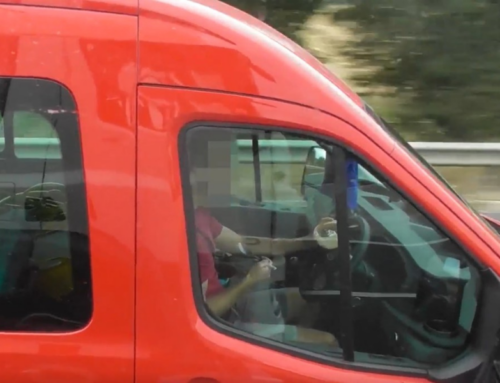What should be included in a driving at work risk assessment?
Driving for work is one of the most dangerous things an employee will do during the working day – up to 1/3 of all road traffic incidents involve someone who was driving for work at the time.
If you manage drivers, you have a legal responsibility to minimise road risk for your employees and other road users – and you may be asked to prove what steps you have taken to do so in the event of a road traffic incident.
If your organisation doesn’t have a driving for work policy or hasn’t followed a driving for work risk assessment example, you’ll struggle to demonstrate how you’ve fulfilled this duty of care. And that’s not taken lightly by authorities – you could face serious legal penalties including prosecution.
That’s why you must have these policies and processes in place. It doesn’t have to be a complicated or difficult task – there are plenty of helpful resources and templates available online – but it’s one that will make a serious difference to the health and safety of your employees and other road users.
What is risk assessment in driving?
A risk assessment in driving identifies hazards, evaluates risk, and addresses hazard elimination. If you manage employees who drive for work, you need to carry out a risk assessment, regardless of how often they drive, how long the journey is, or whether it’s usually a part of their regular role.
Managing driving risk
Driving at work risk assessments are vital for crash and injury prevention, and making sure that your employees get home safe each day. It also makes good business sense – better managing road risk means lower insurance costs, lower maintenance costs, lower fuel costs, and lower insurance premiums.
Above all, under the Health and Safety at Work Act 1974, employers have a legal obligation to manage risk in the workplace, and that responsibility doesn’t end when an employee leaves the office. A vehicle used for a work-related journey is an extension of the workplace, so health and safety law and your obligations fully apply here too.
The Management of Health and Safety at Work Regulations 1999 state that you are required to produce written risk assessments for your business activities if you employ over five people – that includes driving for work. Even if you employ less than five people, you still need a driving for work risk assessment HSE to fulfil your legal duty of care and manage road risk.
A great way to get started is by completing a driving for work Gap Analysis. This is a simple way to find out where your gaps are in terms of managing road risk in your organisation, and what you need to do to plug them. Think of it as a driver and vehicle risk assessment checklist which tells you what areas you need to work on – it’s the perfect foundation to a comprehensive driver safety strategy.
What are the 5 things a risk assessment should include?
According to HSE guidelines, there are five key principles to an effective risk assessment. These are:
- Identify the hazards
- Assess the risks
- Control the risks
- Record your findings
- Review the controls
When driving for work, your employees not only face risks on the road, but they create them too. By completing a free online driver risk assessment and having a legally compliant driving for work policy in place, you can rest assured that you’ve taken steps to fulfil your legal responsibilities and protect the lives of your employees.
Which is an example of a driving risk?
All drivers face risk. It’s an inherently dangerous activity – so your health and safety policies need to cover driving for work in depth.
There are various factors that can make driving more dangerous – these include long journey distance and duration, poor health (both physical and mental), stress, driver fatigue, and adverse weather conditions.
These factors should all be considered in your driving for work policy and risk assessment. But managing fleet risk is all about continuous improvement. Things are constantly changing: legislation, the size of your fleet, the vehicles you use, and the challenges your drivers face. So, your driving for work risk management strategy needs to stay up-to-date. Policies and risk assessments need to be regularly reviewed and updated as necessary.
As part of this process, you might find it helpful to benchmark your fleet against other organisations to see where you are now, where you need to improve, and at a point in the future, how you have improved.
What is the risk assessment of a driver?
The risk assessment of a driver is about identifying the hazards they face, and what you can do as an employer to minimise the risks.
It might refer to a risk assessment for driving company vehicles, or for private vehicles used during working hours – what matters is that if your employees are making a work-related journey during working hours, you have a legal duty of care under HSE law to minimise the risks created and faced by your employees.
You also need to be able to prove that you have taken this responsibility seriously – that means having a driving for work policy and carrying out a driving for work risk assessment. This Driving for Work Policy Builder not only provides a clear and comprehensive template to make sure your policy is fully compliant, but also keeps you up-to-date with any changes to regulations.






